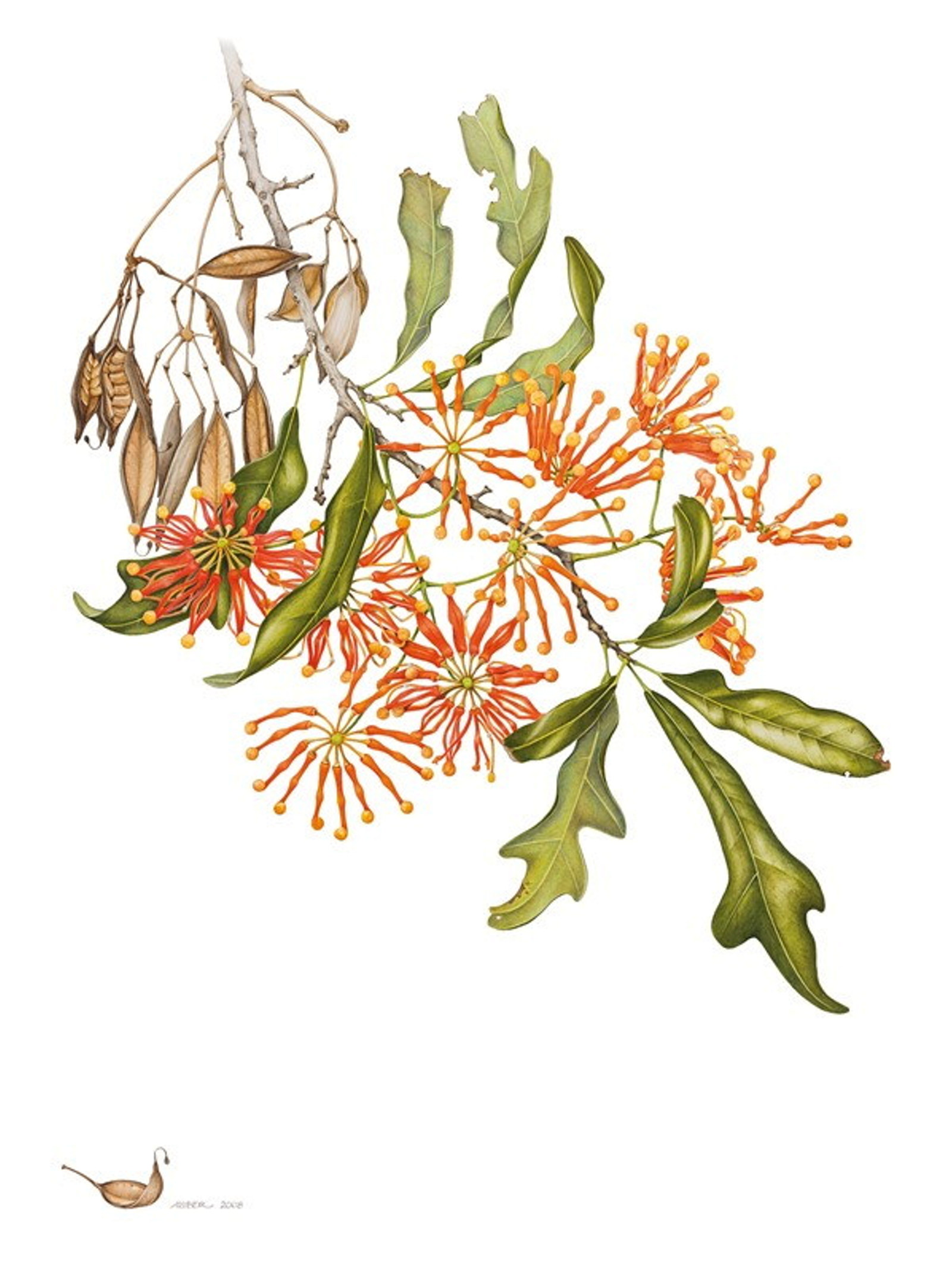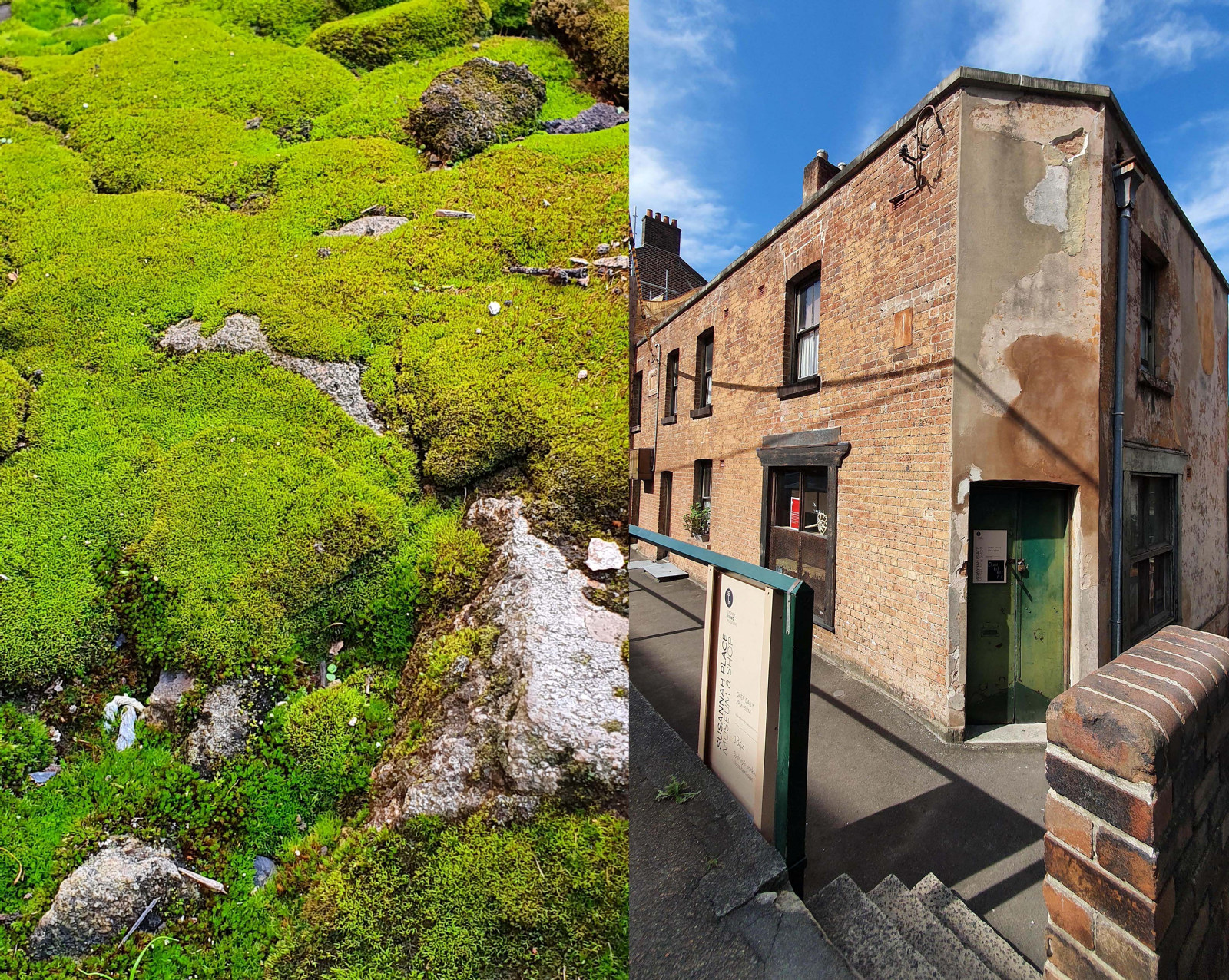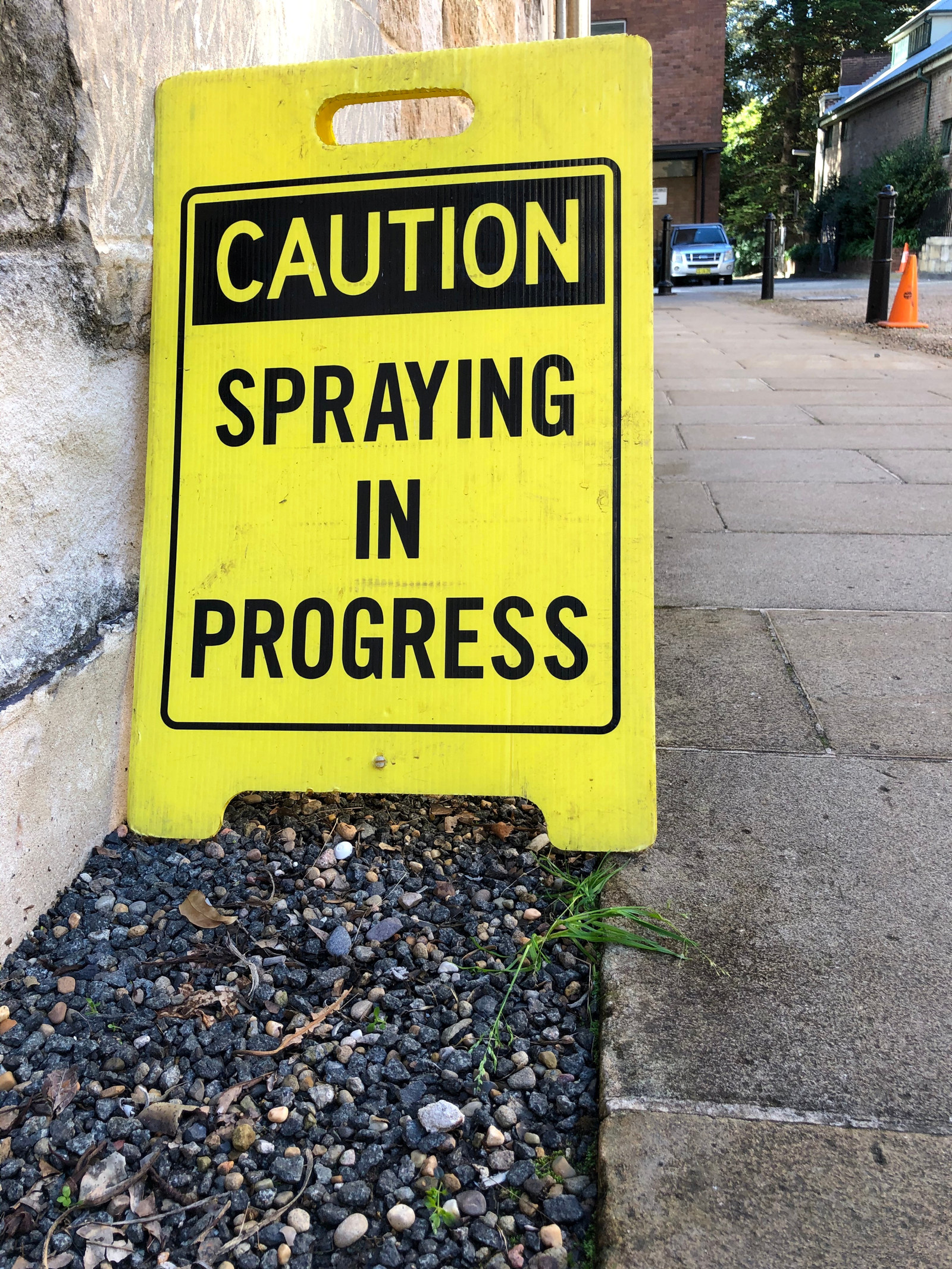The flowery Lord Carrington addresses
Our gratification at your visit is much increased because you have been pleased to afford us an opportunity of presenting you with this slight tribute ere you leave these shores ….
One might be forgiven in thinking that the above extract comes from some chivalric medieval address by a grateful knight or a rescued damsel. But this flowery address was directed to Lord Carrington, Governor of NSW ere he departed the shores of Sydney in 1890. His regal service to the citizenry of the colony of NSW from 1885 to 1890 was rewarded with many such ‘slight tributes’. In fact, Lord and Lady Carrington were the recipients of hundreds of these textually and visually magnificent illuminated addresses. They were presented to Lord Carrington by different municipalities and organisations after discharging the functions of his “exalted position” which was “performed in so satisfactory a manner, as to meet with the highest appreciation and esteem of the people”.1
These addresses were created as historical keepsakes and comprise 22 leather bound volumes, some of which were returned to the NSW people in May 2014 by the Carington family at Government House.2 Addresses such as these were commonplace in the late 19th and early 20th centuries as a ceremonial vehicle of respect, esteem and identity that were imbued with civic and national pride.3 This article focuses on an 1890 address presented to Baron Carrington from the Rockdale, Kogarah & Hurstville Municipal Districts. They form pages 7 and 8 of Volume 14, generously digitised by our State Archives collections team. [Image 1 & 2] The pages have been arranged side by side to experience the composition fully [Image 3].
It is easy to see why the Lord Carrington Addresses (LCAs from now on) are appealing. They bear many hallmarks of illuminated manuscript design: chivalric language, elaborate calligraphy and initials, miniature illustrations, heraldry, rubrics and above all beautiful flora and fauna.4 They also tie into the historical nostalgia of 18th century romanticism, part of the medieval revival movement in England and suggest a desire on the part of the young Australian colony to maintain historical links and show loyalty to the mother land.5
In the above address we can identify native flowers such as: Flannel Flowers (Actinotus helianti), Pink 5 Corners (Styphelia triflora), Swampy/Showy Parrot Peas (Dillwynia floribunda), Dusky Coral Peas (Kennedia rubicunda) and Snowbells (Pandorea pandorana).6 The composition also features a Rockwarbler (Origma solitaria), on page 7, which interestingly is the only bird endemic to NSW7 and two butterflies: a Monarch (Danaus plexippus), which is a relatively recent - 1871 arrival from North America8 and what might be a Black and White tiger (Danaus affinis) on page 8. It is interesting to think of the endemic bird and the recent butterfly as somehow emblematic of the larger story in Australia’s history of colonisation.
Examining these LCAs a bit closer for detail, we observe ornate borders surrounding medieval calligraphy and further smaller borders enclosing miniature landscape vignettes showcasing a bucolic and thriving colony. [Image 4] We also note the presence of heraldry in the form of Lord Carrington’s coat of arms and his motto, “Tenax in Fidelis”,9 [Image 5] as well as a heartfelt appeal from the citizens, “May it please Your Excellency” picked out in red for emphasis (known as a ‘rubric’ in medieval manuscript design). [Image 6] All these elements would suggest that the LCAs are elaborate hand-crafted manuscripts, except they are not entirely so. They are in fact chromolithographs. In the late 1800s chromolithography was highly technical mode of production and was used to print addresses like these, at companies such as John Sands and Co. in Sydney. After the chromolithographic printing of the borders and the flora and fauna was complete, artists would then customise the illustrations by hand.10 [Image 7]
There is a lovely floral connection between the album and MHSW through some of our plants and objects. For example, the Flannel Flower depicted in this LCA, known as ‘Talara’Tingi’ in D’harwal language, is now grown in the Museum of Sydney’s Yura Nura garden and has its own indigenous interpretation.11 [Image 8] And both the Flannel Flower and the Dusky Coral Pea also feature on the painted Macquarie era 'Strathallen Box', on display at MOS.12 [Image 9] But there is a royal floral connection even further afield in France, as we will discover!
Whilst the LCAs are not botanical illustrations, nor were they intended as such, they do have a botanical sensibility.13 The late 18th century was a time botany and ‘botanizing’ were at the height of popularity in England and is said to have turned a nation of shopkeepers into a nation of natural history collectors and avid gardeners.14 Everyone, including the seminal Sir Joseph Banks and Swedish taxonomist Carl Linnaeus were collecting, classifying and re-organising world flora in unprecedented ways with vast numbers of illustrated natural history volumes being produced and circulated globally.15 Botany as a muse and even Linnaeus as a sage were celebrated in this wonderfully eccentric and popular 1791 verse by Erasmus Darwin (Charles Darwin’s grandfather):16 [Image 10]
BOTANIC MUSE! who in this latter age
Led by your airy hand the Swedish sage,
Bade his keen eye your secret haunts explore
On dewy dell, high wood and windy shore;
It comes an no surprise then that Australian plants in this LCA like the iconic Actinotus helianthi [Image 11] and the Kennedia rubicunda [Image 12] were known to French botanists who visited Australia’s ‘high wood and windy shore’ to collect them.17 Samples were sent to France and grown by none other than the Empress Josephine [Image 13] herself in her garden at Malmaison, near Paris as early as 1803.18 [14] The Kennedia rubicunda features in the impressive publication, Le Jardin de la Malmaison dedicated to her.19 [Image 15] We thus witness not just the reach of empire but importantly the often contradictory science of natural history, whose knowledge has shaped the societies of colonisers as much as the colonised.20
John Ruskin, the influential Victorian English art critic, defined beautiful as, “any material object which can give us pleasure in the simple contemplation of its outward qualities without any direct and definite exertion of the intellect”.21 There is no doubt the LCAs are beautiful, but are their aesthetics totally innocent and unproblematic for contemporary audiences? For instance, what if we were to consider the total omission of any indigenous references: botanical or cultural, or the embedded imperial ideology?22
Modern viewers today can “read” the LCAs as texts in their own right.23They are ripe for uncovering the many layers they embody or indeed censure. On the surface, they may be viewed as two-dimensional antipodean Wunderkammers (cabinets of curiosity) crammed full of all manner of wonderous plants and birds, a survey of landscape and colonial enterprise, or as early PR for the colony. However, might the critique of 17th century Dutch still-life paintings [Image 16] as “not just a form of cultural encyclopaedism but an exercise of power” where art was mobilized to “service the appropriation of matter”24 also be applicable to a reading of these flowery and beautiful LCAs? Or should we, as art historian Martin Kemp suggests, just remain open to the existence of enduring human reactions to the world of plants?
Take a look for yourself. The field is wide open to interpretation.
Notes
1. This is part of the text on pages 7 and 8 of the 1890 Rockdale, Kogarah and Hurstville Address to Lord Carrington. Lord Carrington was Governor of New South Wales from 1885 to 1890.
2. The family name is spelt Carington, with one ‘r’ and the title with 2 ‘r’s Carrington Albums
3. Rose, K. (2018). Shifting Values and Changing Tastes: Illuminating Irish Identity through Commemorative Material Culture and Civic Ceremony. Nordic Irish Studies, 17(2), 151-166. doi:10.2307/26657346 Pryor, W. Illuminating Oakleigh, The La Trobe Journal, No. 42 Spring 1988, State Library of Victoria, accessed 20 September 2020
4. “Illuminated” refers only to manuscripts decorated with either gold or silver; but in both common usage and modern scholarship, the term refers to any decorated or illustrated manuscript from Western traditions. Wikipedia
5. It is, however, not all nostalgic. If we examine the landscape vignettes closely, we can see some wide-open spaces ripe for adventure and exploitation. The balance between a thriving ‘established’ colony and one that still offers the potential for ‘discovery’ is what Valda Rigg, in her excellent analysis of the Cliff Albums, (another wonderful 19th century illuminated pictorial album) suggests albums like these have to offer. (Ref. note 22). They were early PR for the colony and a lure to potential immigrants yet showed fidelity to the old country. In the Rockdale LCA we can see bridges such as the Como Bridge over the Georges River and a view to Botany Bay ‘Landing Place of Captain Cook’ with a magnificent building, evoking notions of a ‘civilized colony’. This may be contrasted with the distant views out to Tom Ugly’s Point, without the bridges we now have, suggestive of opportunities for adventure and further expansion, the best of both worlds. (Also refer to Medievalism & Romanticism - Wikipedia)
6. I am indebted to my colleagues Carole Beales, Steve Halliday and Ian Innes for help in identifying the plants in this Rockdale, Kogarah & Hurstville address.
7. The Rockwarbler, the only bird endemic to NSW Wikipedia
9. Wikipedia (Tenacious and faithful)
10. Dr Anne Llewellyn, from the University of Newcastle - 2015 talk on the Carrington albums from the Newcastle region. She suggested that many of the people who worked for companies like John Sands would have been women, “in the early days, it would be people that actually did the hand colouring of all of the books … the pages might have been printed and followed by the team of artists … it was to replicate the colours and to make sure that the things came back to life”. Living Histories (24th Jan 2018). Dr Anne Llewellyn with the Carrington Albums, University of Newcastle 3 June 2015. In Website Living Histories. Retrieved 1 Sept 2020 19:50. Also, refer to MAAS’s collection of John Sands Specimen of an Illuminated Address Border. The MAAS holding features a few blank samples that would have been customised for different addresses. Design for an illuminated address with nature motif 2020, Museum of Applied Arts & Sciences, accessed 22 November 2020, https://ma.as/509747
11. Dharawal Stories
12. The Strathallen Box is associated with the opening of the interior of NSW during Macquarie’s governorship, an achievement commemorated by the obelisk in Macquarie Place. The base of the box is decorated with Australian flowers including white flannel flowers and dusky coral pea surrounding the large central waratah. It is believed the interior of the box was painted (or repainted) in the late 19th century. The artwork on the lid has been attributed to John Lewin. (Text from MOS information panel)
13. “Dr. Anne Llewellyn, op. cit.” - proposed that the illustrations in the LCAs were not made by botanical illustrators, “who would be very particular about putting the plants and the animals together in the right season, at the right time, from the right environment to tell a story about the nature of the place” but rather by artists like Julian Ashton or artists working for companies like John Sands. Elsewhere she suggests the LCAs were designed to be beautiful objects whose value lies in the fact that the stories they tell “take us back 200 years” and even if the flora is not rendered in a truly natural history style, they are a microcosm of what was around in the 1800s.
14. Bewell, Alan. “Romanticism and Colonial Natural History.” Studies in Romanticism, vol. 43, no. 1, 2004, pp. 5–34. JSTOR. Accessed 17 Nov. 2020. Pg 16
15. Ibid, Pg 21
16. The Loves of The Plants along with The Economy of Vegetation were published under the title, The Botanic Garden. Erasmus Darwin enjoyed the support of Joseph Banks, who had taken taxonomist Carl Linnaeus’s star pupil, Dr. Solander, with him on Cook’s expedition to Tahiti, landing on the east coast of Australia in 1770. Janet Browne amusingly sums up this Linnaean inspired poem as one “in which personified plants acted out a numerical taxonomy through a series of frisky vignettes”. Browne, Janet. “Botany in the boudoir and garden”. Visions of empire: voyages, botany, and representations of nature, edited by Peter Hanns Reill and David Philip Miller, Cambridge England; New York: Cambridge University Press, 1996. Pg. 156 Browne, Janet. 1989. Botany for gentlemen: Erasmus Darwin and "The Loves of the Plants". Isis 80, no. 4: 593-621. Pg. 559
17. Hamilton Brandon, Jill Douglas-Hamilton and Julia Bruce. “The French Discovery of Australian Flora”. The Flower Chain: The Early Discovery of Australian Plants (Kangaroo Press, 1998). Pg 124
18. Ibid, “Australia at Malmaison”. Pg 137
19. Le Jardin de la Malamison, Ventenat E. P., 1803, accessed 20 August 2020, website
20. “Bewell, Alan, op. cit.” Pg 11
21. The Aesthetic and Critical Theories of John Ruskin, George P Landow, Victorian Web, 2019, accessed 17 November 2020,
22. Valda Riggs suggests that the Cliff Album (ref note 5) shows utopian images of the colony, that has no Aboriginal people who might “impede imperial progress” and that such 19th century albums adopted a “visual culture that conveyed British heritage and imperial ideology”. Medievalism and the colonial imperative: Illuminating their links in colonial New South Wales, Valda Rigg, reCollections, National Museum of Australia, accessed 15 August 2010
23. In literary theory, a text is any object that can be "read", whether this object is a work of literature or a street sign. J. Alexander suggests that works of art can also be viewed as “texts” and draws upon literary reception theory in his analysis of illuminated medieval manuscripts. Here he proposes that meanings in images could vary over time, for different audiences, and that they may often be sites of contested and conflicting meanings. Alexander, J. (1997). ART HISTORY, LITERARY HISTORY, AND THE STUDY OF MEDIEVAL ILLUMINATED MANUSCRIPTS. Studies in Iconography, 18, 51-66. Retrieved July 18, 2020
24. Roland Barthes, the seminal French literary theorist’s 1953 essay, Le Monde-objet is referred to by Simon Schama as one of the most “compellingly argued accounts of Dutch art”. Simon Schama also suggests that Dutch still-life or pronck painting that showcases the exotic is itself another item in the “inventory of luxuries anthologised in the composition”. Simon Schama, ‘Perishable Commodities: Dutch Still-Life Paintings and the 'empire of Things'’ in Consumption and the World of Goods, Brewer, John; Porter, Roy, (Routledge) Pgs. 478, 479.
Browse the Carringtons

Carrington albums – illuminated addresses
On 2nd January 2014 State Records NSW received 22 Presentation albums from the Centre for Buckinghamshire Studies in Aylesbury, Buckinghamshire, United Kingdom
Published on
Plant your history
Browse all
Florilegium plants
A gathering of flowers: the Florilegium collection
Finely detailed botanical artworks reveal the range of plants introduced to Sydney’s gardens over the past 200 years

Plant your history
A mossy analogy for Susannah Place: small but mighty
Mosses are everywhere! They are small, mighty, unsung and inhabit the most unusual places. They can be found in all our museum outdoor spaces if one looks closely enough

Plant your history
A new weapon in the war on weeds
A black and yellow sign warns me there is “Spraying in Progress”, and I wonder for a moment why no one is wearing a mask, or even gloves. But the dangerous looking mist enveloping these men is not what it seems

Plant your history
Acanthus - an apt symbol for The Mint
Look at any classical building today, anywhere in the world and chances are you will find an acanthus leaf lurking somewhere
